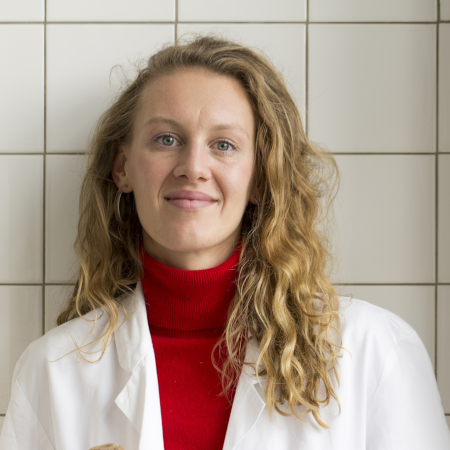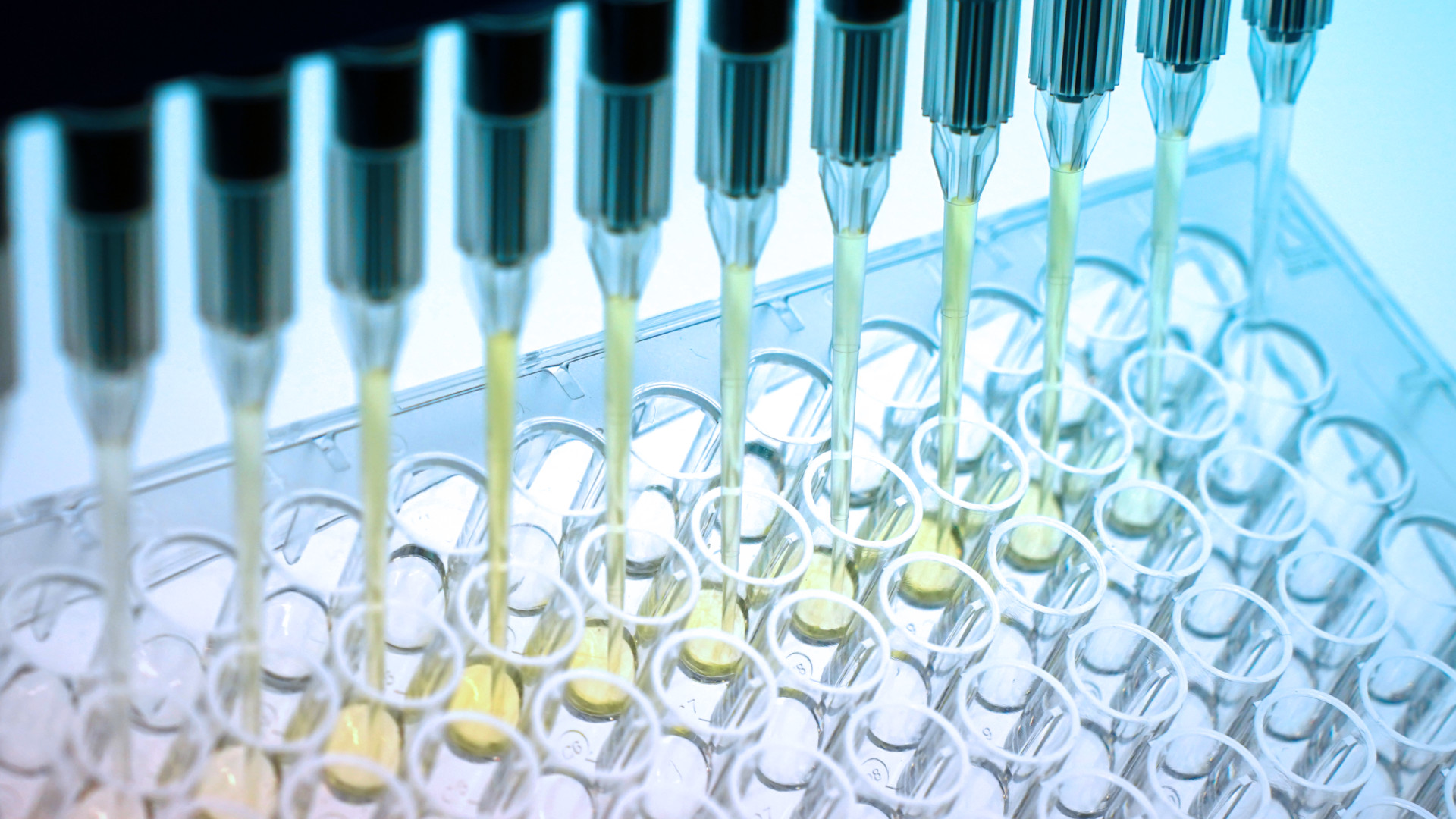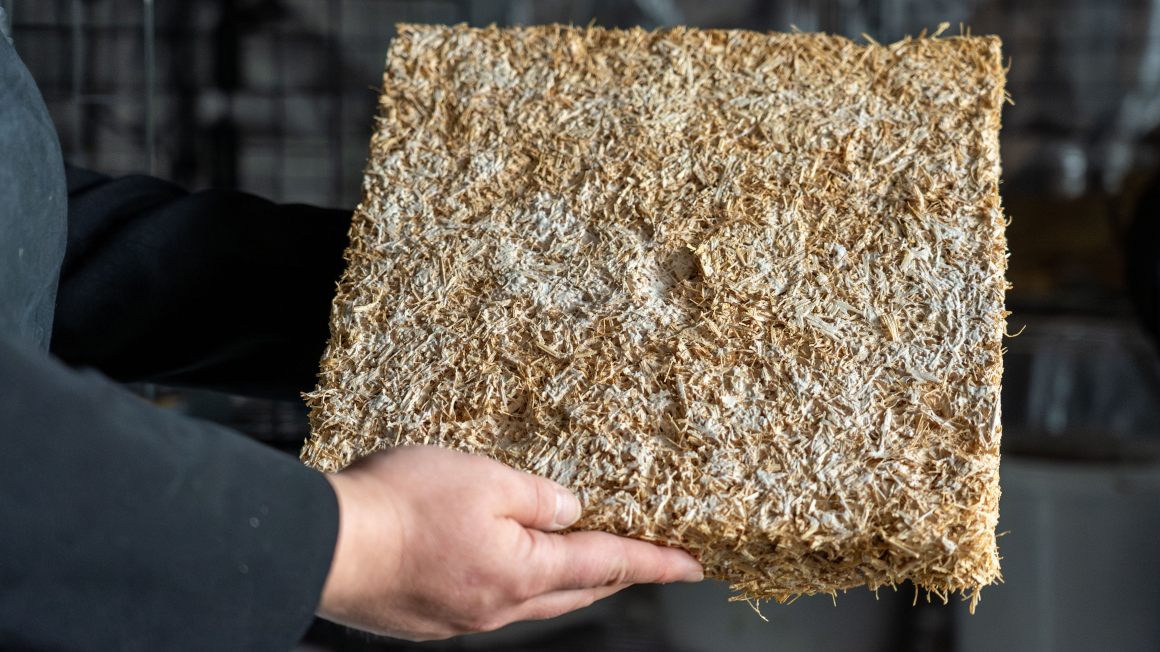‘Dyes from fungi are an alternative to synthetic colors’
Friederike HobergProfession:
Biochemist
Position:
Research associate and scholarship holder in the MycoColors project, Department of Applied and Molecular Microbiology at TU Berlin

Profession:
Biochemist
Position:
Research associate and scholarship holder in the MycoColors project, Department of Applied and Molecular Microbiology at TU Berlin

In the MycoColors project, a team led by Friederike Hoberg is investigating the potential of fungi-based dyes for the fashion and textile industries.
When people think of natural dyes, they usually think of plants. However, fungi also offer a broad spectrum of colors. Unlike plant-based natural dyes, the potential of fungi as dye producers is still largely unknown. Moreover, there is still a lack of suitable biotechnological processes for cultivating dyes from fungal mycelium. A team led by Berlin-based biochemist Friederike Hoberg aims to overcome this challenge in the MycoColors project. The goal is to explore the potential of fungal-based dyes and establish their use in the fashion and textile industries. Using molecular genetic techniques, the mold Aspergillus niger is being developed as a production platform. In the lab, this fungal species has already proven to be a promising dye producer.
How broad is the spectrum of fungi-based dyes? And what are the current obstacles to using fungi as industrial dye producers?
The spectrum of fungi-based dyes covers all the colors of the rainbow. The diversity of colors found in fungi is just as rich as that in the animal or plant kingdoms. There are certain pigment molecules that absorb light and appear colorful to us, which are found only in fungi – making them especially interesting. However, to utilize these fungi biotechnologically and industrially, we need to cultivate them in the lab, which involves overcoming several challenges. Some fungi that are promising for dye production also produce mycotoxins, have relatively slow growth rates, or only generate dyes under specific, potentially impractical conditions. We're currently researching how to bypass these limitations using molecular methods.
How much potential do fungi-based dyes have for creating new sustainable materials – particularly in the textile and fashion industries?
In the textile and fashion industries, nearly all dyes currently in use are synthetic, derived from non-renewable petroleum-based raw materials. Many of these synthetic dyes are potentially harmful to humans and ecosystems when released into the environment, and need to be replaced with natural alternatives. Plant-based dyes do exist, but they come with significant drawbacks. They require agricultural land, water, fertilizers, and pesticides, and their production is dependent on weather and seasonal conditions – making them neither ecologically nor economically ideal. Microorganisms like fungi, bacteria, and algae offer a more viable alternative as natural dye producers. Especially promising are those microorganisms that can produce natural dyes through bioreactor cultivation. They have strong potential to become a truly sustainable and cost-effective alternative to synthetic dyes. It’s also worth noting that we’ve only discovered an estimated 5% of all existing fungal species – meaning the full potential is far from exhausted.
What is the focus of your research? What are you aiming to achieve?
One approach to overcoming the mentioned challenges is transferring dye production into a well-established industrial host organism. A suitable candidate is the well-studied and metabolically powerful fungus Aspergillus niger, which produces several million tons of citric acid annually. A. niger has already proven to be an efficient heterologous producer of secondary metabolites – natural substances produced enzymatically in cells but not essential for the organism's survival. Most natural dyes are secondary metabolites and can be produced in the right host with the appropriate genetic toolkit. Our goal is to further develop A. niger as a platform for producing pigment-based natural compounds.
What methods do you use to detect and extract color pigments from fungi?
Some fungi-based dyes and pigments have already been identified in the scientific literature, but most have not been thoroughly researched. In many cases, the genes responsible for color production have yet to be described. We use RNA sequencing and bioinformatics to predict the genes involved. Next, we use various molecular genetic techniques to insert these genes into the target organism. Genetic modifications must be verified, and if everything works as planned, the dye is produced during cultivation and then extracted.
What are the challenges in extracting fungal dyes and optimizing them? How can pigment production and yield be increased?
Just as the colors are diverse, so are the molecules behind them. That means extraction methods, purification processes, dye stability, and applications vary for each pigment. To tackle these challenges, it’s helpful to use the same host organism across the board – especially when it comes to dye extraction and yield optimization. The yield can be improved using genetic engineering, metabolic pathway manipulation, and by optimizing growth conditions and process parameters. One of the biggest challenges remains the acceptance of new dyes – and the potential changes they may bring to dyeing processes and color properties. It's important to note, however, that natural dyes can achieve similar lightfastness and wash fastness to synthetic dyes.
What have you achieved so far? And what are your next steps?
At the Department of Applied and Molecular Microbiology at TU Berlin, we’ve already shown that Aspergillus niger is a suitable producer of various dyes. We’ve also successfully introduced several genes into this fungus that are necessary for heterologous dye production. We’ll continue working on these genetic modifications to further develop A. niger as a production platform. Additionally, optimizing production and refining extraction methods are central parts of our current research – essential steps to bringing promising sustainable dyes into industrial use.
Interview: Beatrix Boldt


